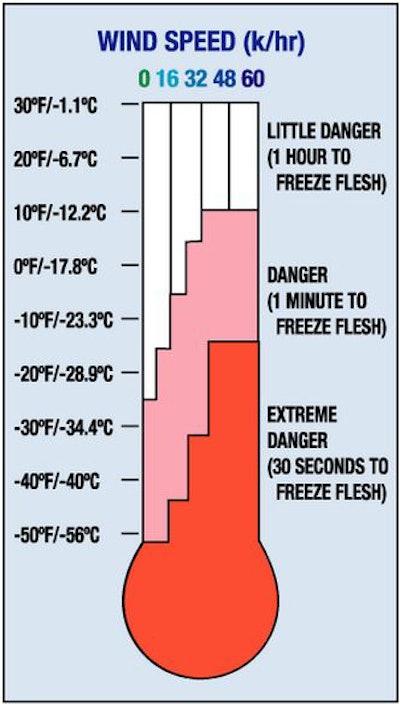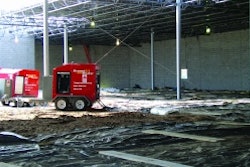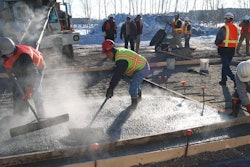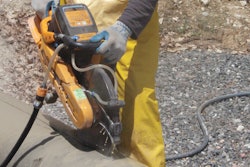
The forecast for the northern plains states last week was in the mid double digits . . . BELOW zero. Add the wind chill factor, and some might say it’s going to get chilly up there. Construction workers are dealing with a climate like Siberia's or the Antarctic.
Most folks that work outside in the cold are great at keeping warm but when the weather hits extremes like we'll be seeing in the coming weeks, it's a good idea to review the basics.
The object is to conserve as much body heat as possible, similar to when we insulate a structure. Heat loss is worst at the "openings," or where skin or thin clothing layers are exposed.
Consider these seven tips to make sure you don't fall prey to the chill:
- Thermal insulated coveralls are at the head of the food chain. The coverall design largely eliminates core body heat loss while affording good range of motion. They’re a bit costly, but if your work is outdoors in winter, start measuring.
- Helmet liners under a hard hat are very effective at preserving neck and head heat. Fleece lined fabric is very comfortable and a good insulator. Keep spares on hand and wash the liners regularly. The hard hat breaks the wind and allows the liner to do its job; it’s a very effective assembly. Liners are available in a range of size and coverage; the longer the better for protective coverage.
- Glove selection should be an art form. Fabric and texture need to be suited to the job, but try to find gloves that allow you to use a liner. Usually they need to be a little over-sized, but a lot of improvements have been made. Also, insulated mittens have been developed with various configurations for finger dexterity.
- Wrap-around eye protection can also help preserve body heat. There is a lot of blood flow in and around the eyes, and wearing glasses can minimize heat loss. I addition, eyeballs are covered with a mucous membrane, and subject to being desiccated and irritated by cold, dry air and wind. Not to mention dirt particles. Or flu virus.
- Scarves are very effective at protecting the neck and chest from heat loss, and they allow easy adjustment or removal for cooling as needed.
- Double layer thermal socks and insulated boots – good idea if you’re going to be standing or walking on cold surfaces. Steel toes are notorious for acting as a "cold sink." When possible ask for a composite toe, which is almost as strong. Also, try to stand on a mat, plywood or other insulating barrier if you’ll be out in the cold for long periods.
- Use skin creme, moisturizer, barrier creams, etc. on any exposed skin. You are basically trying to ward off hypothermia and avoid frostbite on any exposed skin, so try to figure out how to cover as much as possible and not look too alien in the process. Ski masks can be useful, but they’re not designed for use with a hard hat. I guess that’s why a lot of the huskies grow beards.
Hold a safety meeting and explain the treatment for hypothermia and frostbite. Check your insurance policy. Keep your parts supplier and welders phone numbers handy. And if it all starts becoming too much to bear, call Delta and reserve a flight to Orlando.
John J. Meola, CSP, ARM is a safety consultant with Invincia Insurance Solutions in Chesterfield, VA. He can be reached at [email protected]



















